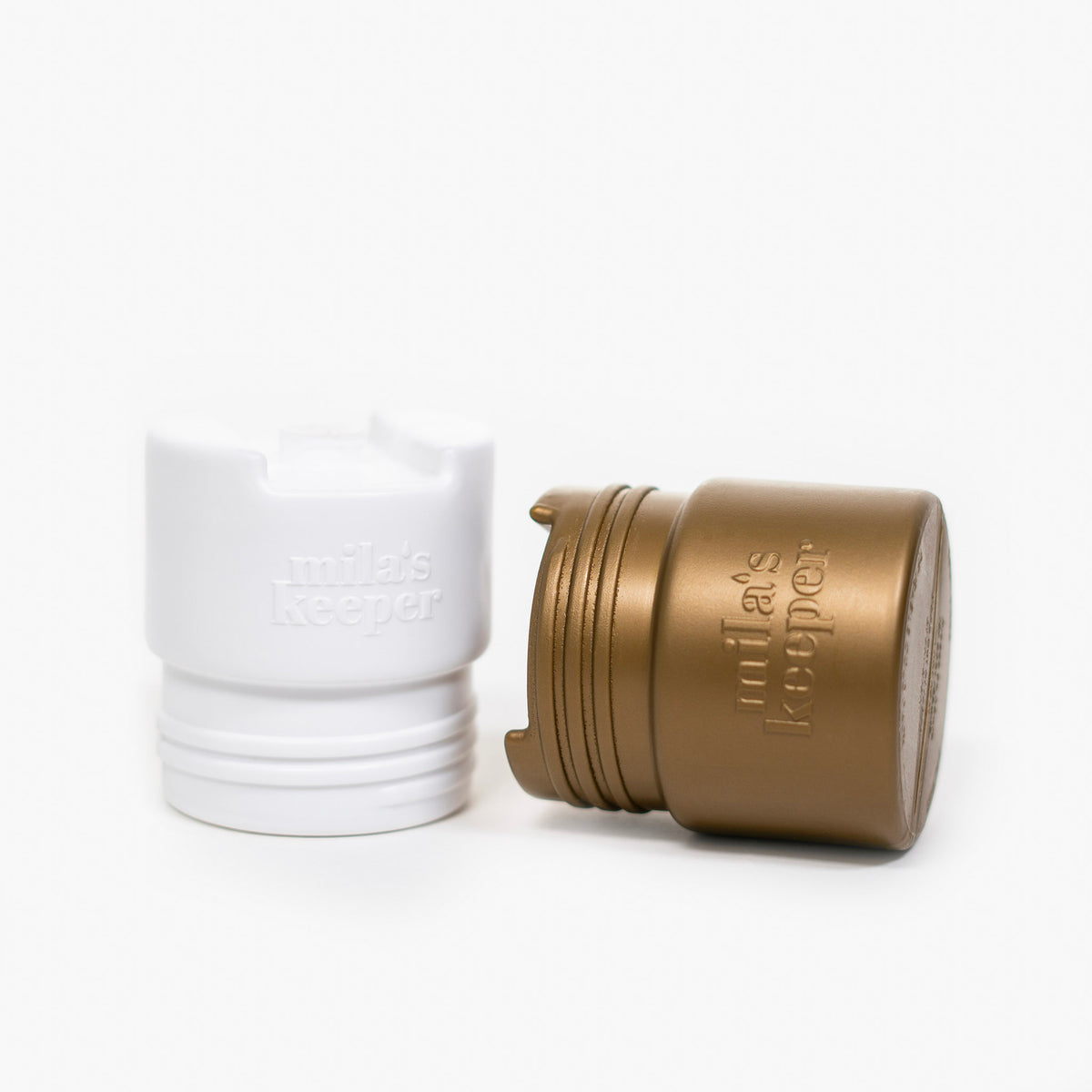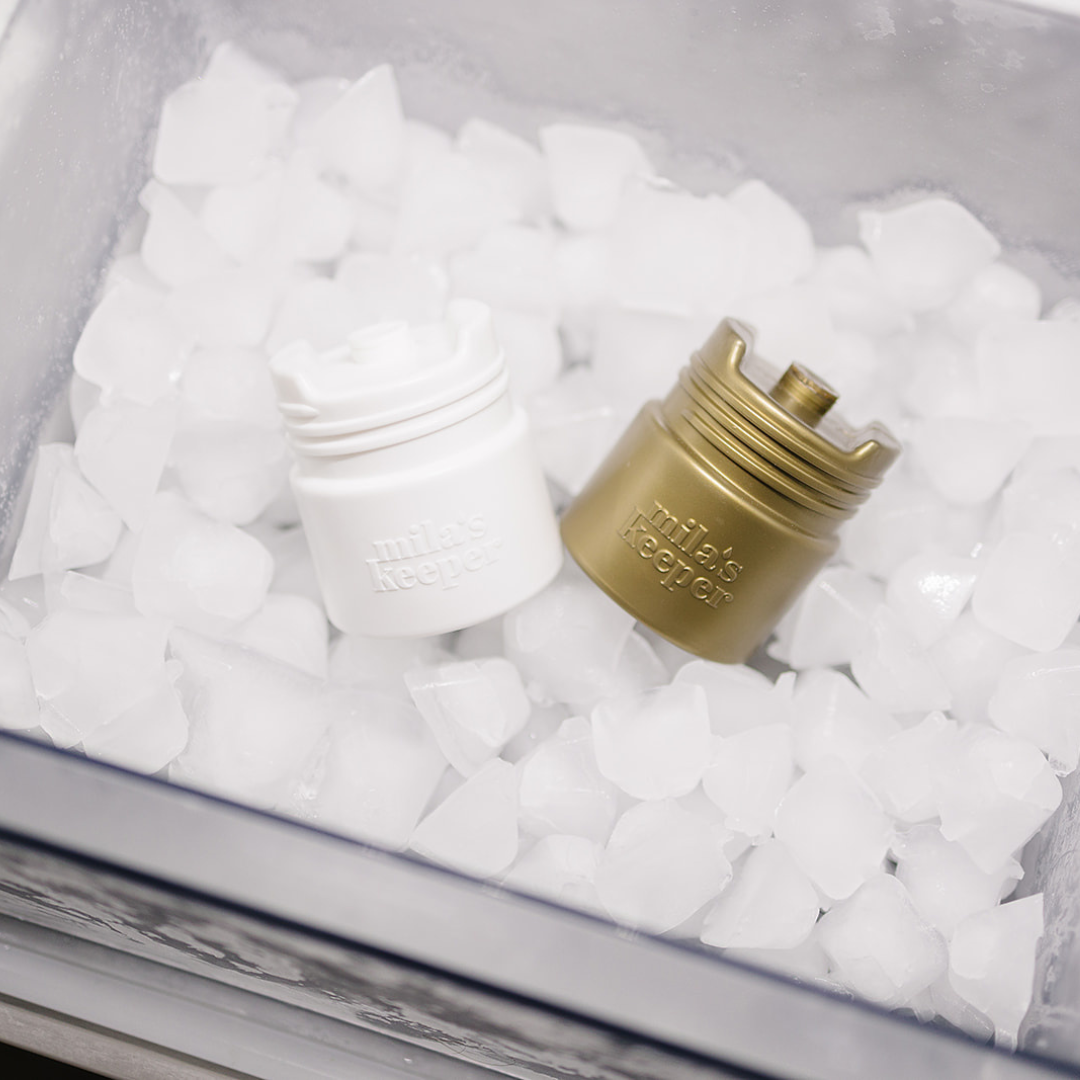Breastfeeding is a natural and beautiful way to nourish your baby, but it's not always without its challenges. One common hurdle that many breastfeeding moms face is low milk supply. In fact, the most common reason women give for stopping breastfeeding early is because of low supply, so if you're experiencing it, you're not alone.
Understanding the causes of low milk supply is just the first step. Implementing strategies to increase your supply can help you navigate your breastfeeding journey with confidence and success. Remember, every breastfeeding experience is unique, so don't hesitate to seek support from healthcare professionals or breastfeeding support groups if you need it. With patience and perseverance, you can overcome low milk supply and enjoy a fulfilling breastfeeding experience with your baby.
Why is My Milk Supply Low? Unraveling the Mystery
Understanding the complexities of low milk supply is crucial for breastfeeding moms who may encounter challenges along their nursing journey. Breastfeeding is a supply-and-demand process: the more the baby feeds, the more milk the body produces. However, some factors can disrupt this delicate balance, leading to low milk supply.
One of the primary reasons for low milk supply is ineffective milk removal, often due to improper latch or infrequent feedings. When the breasts aren’t adequately emptied, the body receives a signal to produce less milk.
Certain medical conditions, such as hormonal imbalances (e.g., thyroid issues), can interfere with milk production.
Stress and fatigue can also play a role, as they can inhibit the release of oxytocin, a hormone essential for milk letdown.
Environmental factors can contribute to low milk supply as well. Poor nutrition, dehydration, and certain medications can impact milk production.
Additionally, early introduction of formula or pacifiers can reduce the baby's demand for breast milk, leading to decreased supply over time.

Low Milk Supply Causes: From Health to Lifestyle Factors
Several factors can contribute to low milk supply, ranging from maternal health conditions to lifestyle choices. Maternal health plays a significant role in milk production.
Hormonal imbalances, such as insufficient glandular tissue or polycystic ovary syndrome (PCOS), can impact milk supply. For example, women with PCOS may have higher levels of androgens, which can affect milk production.
Certain medications, such as hormonal birth control or decongestants, can reduce milk production. It's important to consult with your healthcare providers about the potential impact of medications on breastfeeding.
Stress levels can have an impact on milk supply. High levels of stress can interfere with the release of oxytocin, hindering milk letdown. A study published in the "Journal of Clinical Endocrinology and Metabolism" found that women who reported higher stress levels had lower milk supply. Finding ways to manage stress, such as relaxation techniques or seeking support from loved ones, can help maintain a healthy milk supply.
Can Dehydration Cause Low Milk Supply?
Serious dehydration can indeed have an impact on milk production, but for the most part, if you haven’t been able to meet the recommended amount of water for the day, it shouldn’t affect the production of your milk by too much. Breastfeeding women should aim to get about 128 ounces of fluids from all sources a day, with about 104 ounces of that being water. That translates to about 13 cups of water per day.
One of the simplest ways to tell if you’re dehydrated is by checking the color of your urine. If your urine is pale yellow or almost clear, you’re likely getting enough water. If you find yourself urinating less frequently, or your urine is dark yellow or even light brown in color, you could be dehydrated.
Symptoms for dehydration can be different for each person. Some people may experience these warning signs of dehydration:
- Weakness
- Low blood pressure
- Dizziness
- Confusion
- Chapped lips
- Thirst
- Tiredness
- Dizziness
- Lightheadedness
- Muscle cramps
- Dry Mouth
- Less urine
- Headache
- Dry skin or tongue
- Fainting
- Confusion
- Fast heart rate and breathing
Recognizing the Signs of Low Milk Supply
It's important for breastfeeding moms to be able to recognize the signs of low milk supply to address any potential issues early on.
One common sign is if the baby isn’t gaining weight as expected. Regular visits to the pediatrician can help monitor the baby's growth and ensure they’re getting enough milk.
Another sign is if the baby isn’t producing enough wet or soiled diapers. A newborn should have about six wet diapers and three to four soiled diapers per day.
According to WIC Breastfeeding Support, most of the time your body is making as much milk as it needs, even if you don’t realize it. They give this list of things you should NOT worry about:
- How your breasts feel. Your breasts will feel softer and less full as your milk supply adjusts to your baby's needs. This does not mean you have low supply.
- If your baby nurses for shorter periods of time, such as only 5 minutes on each breast.
- If your baby's feeds are bunched together. This is called cluster feeding and happens when your baby starts nursing more often and for longer. This can happen in the evenings or because of growth spurts.
- Not getting much milk when you express. Your baby is much more effective than a pump or hand expression at getting out milk. Find tips to help you pump.

Navigating Low Milk Supply at Night: Understanding and Coping
Many breastfeeding moms find that their milk supply is lower at night, which can be challenging when trying to meet their baby's feeding needs. One reason for reduced milk production at night is the natural fluctuations in hormone levels that occur during sleep. Prolactin, the hormone responsible for milk production, is typically higher during nighttime feedings. However, some women may not experience the same increase in prolactin levels, leading to lower milk production.
Another reason for low milk supply at night is the baby's feeding pattern. Some babies may feed less frequently at night, which can signal the body to produce less milk. Or the baby's sucking pattern may be less effective at night, leading to inadequate milk removal and decreased milk production.
To manage and potentially improve milk supply at night, moms can try different techniques. One strategy is to ensure frequent feedings throughout the day to maintain milk production. Encouraging the baby to feed more frequently at night can also help stimulate milk production. Moms can also try pumping after nighttime feedings to signal the body to produce more milk.
Managing Low Milk Supply in the Afternoon and Evening
It's not uncommon for breastfeeding moms to experience a dip in milk supply later in the day, particularly in the afternoon and evening. This decrease in milk production is mostly attributed to a decrease in prolactin levels throughout the day.
One effective strategy to help maintain a consistent milk supply throughout the day is to focus on frequent and effective breastfeeding or pumping sessions earlier in the day. This can help stimulate milk production and ensure an ample milk supply later in the day.
Moms should also try offering both breasts during each feeding to encourage more milk production.
It's important for moms to drink plenty of fluids and eat a healthy diet throughout the day to help with milk supply in the later hours. Keeping a water bottle handy and taking regular sips can help ensure adequate hydration. Eating a well-balanced diet rich in nutrients can also support milk production. Foods that are high in protein, such as lean meats, poultry, fish, and legumes, can be particularly beneficial. Lactation supplements like fenugreek or blessed thistle and certain drinks to increase milk production can help, although their effectiveness varies.
Managing stress is another important aspect of maintaining milk supply. Finding ways to relax and unwind, such as practicing yoga, meditation, or deep breathing exercises, can help reduce stress levels and support milk production.
Low Milk Supply During Period: Coping with Monthly Changes
Hormonal changes during the menstrual cycle can have a noticeable impact on milk production for some breastfeeding moms. Around the time of ovulation and leading up to menstruation, levels of the hormones estrogen and progesterone decrease, which can result in a temporary dip in milk supply. This is due to the hormonal interplay between these reproductive hormones and prolactin, the hormone responsible for milk production. While this dip in supply is typically temporary and normal, some moms may find it challenging to cope with these fluctuations.
One way to manage low milk supply during this time is to increase breastfeeding frequency. Nursing more frequently can help stimulate milk production and meet the baby's needs despite the temporary decrease in supply.
Moms experiencing low milk supply during their period might also consider pumping between feedings to help stimulate milk production. This can be helpful during times when the baby isn’t feeding as frequently or effectively.

Low Milk Supply After COVID: Overcoming Post-Illness Challenges
Illnesses like COVID-19 can have an impact on breastfeeding and milk supply. During illness, the body's resources are often diverted to fighting off the infection, which can lead to a temporary decrease in milk production. The stress and fatigue associated with illness can also contribute to low milk supply.
One important step to rebuilding milk supply after illness is to focus on rest and self-care. Getting plenty of rest, eating a nutritious diet, and staying hydrated can help support the body's recovery and milk production. It's also important for moms to listen to their bodies and give themselves permission to take it easy while they recover.
Support from a lactation consultant or breastfeeding support group can also be valuable during this time. These professionals can provide guidance and reassurance to moms who may be struggling with low milk supply after recovering from an illness.
Optimizing the Milk Let Down Process for Better Supply
The milk let-down process, also known as the milk ejection reflex, plays a crucial role in milk production. When a baby latches onto the breast and begins to suckle, sensory nerves in the nipple are stimulated, sending a signal to the brain to release the hormone oxytocin. Oxytocin causes the muscles around the milk-producing cells in the breast to contract, pushing the milk into the ducts and out of the nipple. This process is essential for ensuring an adequate milk supply for the baby. To stimulate a stronger let-down reflex and enhance milk supply, moms can try several techniques.
One great strategy is to create a relaxing and comfortable environment for breastfeeding. Stress and tension can inhibit the release of oxytocin, so finding a quiet and peaceful place to breastfeed can help promote a strong let-down reflex. Taking deep breaths and practicing relaxation techniques before and during breastfeeding can also be helpful.
Another tip is to ensure proper latch and positioning during breastfeeding. A good latch can help ensure that the baby is effectively removing milk from the breast, which can stimulate the let-down reflex. For moms who are pumping, using a breast pump that mimics the baby's sucking pattern can help stimulate the let-down reflex and enhance milk production.
In conclusion...
Low milk supply is a common concern for breastfeeding moms, but it's important to remember that it's often temporary and manageable with the right strategies. By understanding the factors that can contribute to low milk supply and implementing practical tips to enhance milk production, moms can overcome these challenges and continue to breastfeed successfully.
Seeking support from healthcare professionals, lactation consultants, and breastfeeding support groups can also provide valuable guidance and reassurance. Every breastfeeding journey is unique, and it's okay to seek help and make adjustments along the way.
Keep Reading related blog: 9 Reasons Why You Should Speak With A Lactation Consultant
--
A female-designed and female-run company, Mila's Keeper is on a mission to empower women to thrive during their breastfeeding journey by offering reusable, eco-friendly breast milk storage solutions for their day-to-day needs. Get the latest tips and info on Mila's Keeper products by following us on Facebook, Twitter, Instagram, Pinterest, and LinkedIn.























